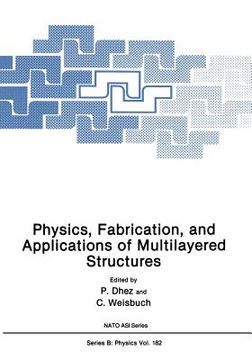Share
Physics, Fabrication, and Applications of Multilayered Structures (in English)
Weisbuch, Claude (Author)
·
Springer
· Paperback
Physics, Fabrication, and Applications of Multilayered Structures (in English) - Weisbuch, Claude
$ 52.09
$ 54.99
You save: $ 2.90
Choose the list to add your product or create one New List
✓ Product added successfully to the Wishlist.
Go to My WishlistsIt will be shipped from our warehouse between
Monday, July 15 and
Tuesday, July 16.
You will receive it anywhere in United States between 1 and 3 business days after shipment.
Synopsis "Physics, Fabrication, and Applications of Multilayered Structures (in English)"
Low-dimensional materials are of fundamental interest in physics and chemistry and have also found a wide variety of technological applica- tions in fields ranging from microelectronics to optics. Since 1986, several seminars and summer schools devoted to low-dimensional systems have been supported by NATO. The present one, Physics, Fabrication and Applications of Multilayered structures, brought together specialists from different fields in order to review fabrication techniques, charac- terization methods, physics and applications. Artificially layered materials are attractive because alternately layering two (or more) elements, by evaporation or sputtering, is a way to obtain new materials with (hopefully) new physical properties that pure materials or alloys do not allow. These new possibilities can be ob- tained in electronic transport, optics, magnetism or the reflectivity of x-rays and slow neutrons. By changing the components and the thickness of the layers one can track continuously how the new properties appear and follow the importance of the multilayer structure of the materials. In addition, with their large number of interfaces the study of inter- face properties becomes easier in multilayered structures than in mono- layers or bilayers. As a rule, the role of the interface quality, and also the coupling between layers, increases as the thickness of the layer decreases. Several applications at the development stage require layer thicknesses of just a few atomic layers.

